Why does my Ollie turn?
There are more than 5 reasons including the use of shoulders. Weight distribution could be a major factor, too.
Last time, we went over the basics of an Ollie. As a common problem, you might have hard time keeping your board parallel to the direction you are going. But is that really your shoulders that make your Ollie turn? I mean, it could be but is that all because of that? If it is, you shouldn't be able to Ollie with your shoulders open or front side 180 with your shoulders closed. But in reality, they are possible. This would probably mean that we are missing something radical.
Summary
Why does my Ollie turn?
There are more than 5 factors that could cause this problem. Although the angle of shoulders is a major cause of this problem, do is the weight distribution. If you lean on the heel side, your body tries to support its weight by pulling your front foot back under its weight. This could be why your board turns even when you close your shoulders.
Should I close my shoulders?
Yes, you should avoid opening your shoulders too much. But you don't have to have your shoulders completely parallel to your board. While having your shoulders open could direct your slide and poo sideways, your body can accept a certain angle of shoulders.
Where should I keep my weight?
Keep your weight over your board the whole time. Try to avoid leaning on the heel side or your board will turn even with your shoulders closed.
Simulation
Premises
List of factors that could turn your Ollie
In order to understand what could really cause this problem, let's list up major factors that could cause this problem according to the timeline.
Before going into the details, I highly recommend recording yourself since multiple factors could cause this problem at different points in the timeline. So try to diagnose your situation from an objective point of view.
I believe factors #3 and #4 are the most potentially important causes of this problem. So let's talk about them first and return to the rest afterward.
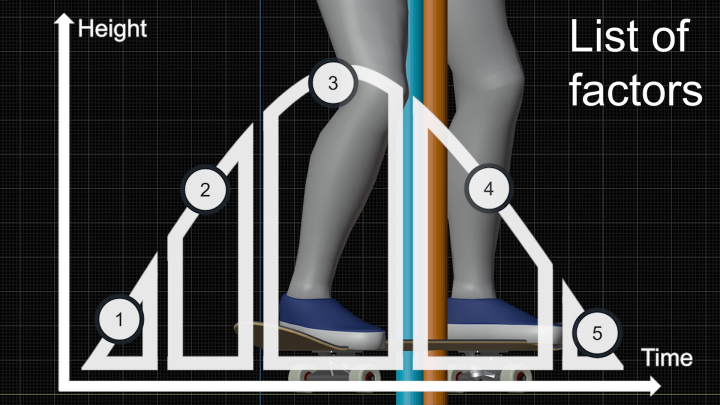
Angle of shoulders
Is it really the cause of the problem?
Opening shoulders could cause this problem under some conditions, but not always. What's even more important is to understand there are different ways to open shoulders.
For example, you might open up your shoulders when you jump up. Or you might Ollie with your shoulders open the whole time. They are different actions that come with different consequences. So let's focus on their differences and see what they do separately.
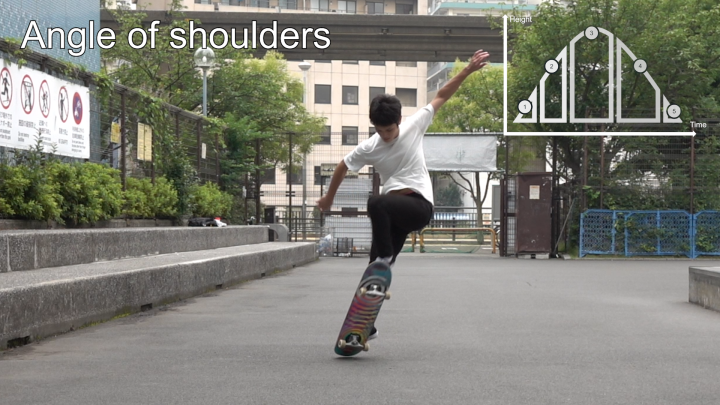
Case 1: Opening your shoulders when jumping up.
You should avoid doing this as it gives horizontal momentum to your board. This case is indicated by your board turning while your board is going up.
The horizontal momentum you generate starts turning your board right after your board leaves the ground. So by the time it reaches the highest point of an Ollie, it would have turned already.
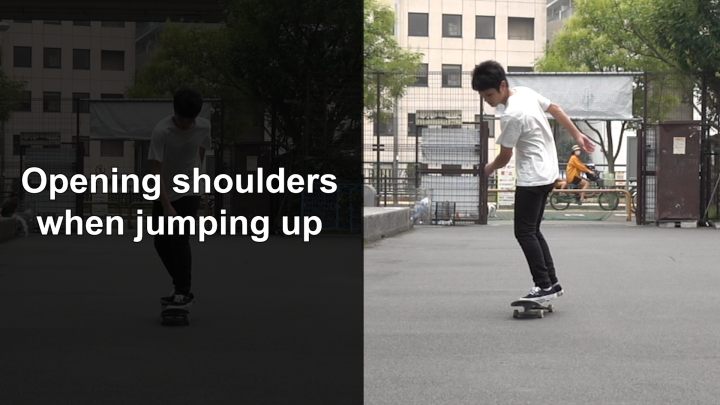
Case 2: Doing an Ollie with your shoulders open the whole time
Although doing this might make it harder to align your board to the direction you are going, it is not a direct cause of the problem.
For example, when you Ollie light, your lower body keeps a distance from your upper body and can absorb the horizontal rotation of your body.

A problem happens when you go for a higher Ollie and pull up your feet closer to your chest, and your lower body's angle gets closer to your upper body's. If you do this, your board will turn at the peak of your Ollie.
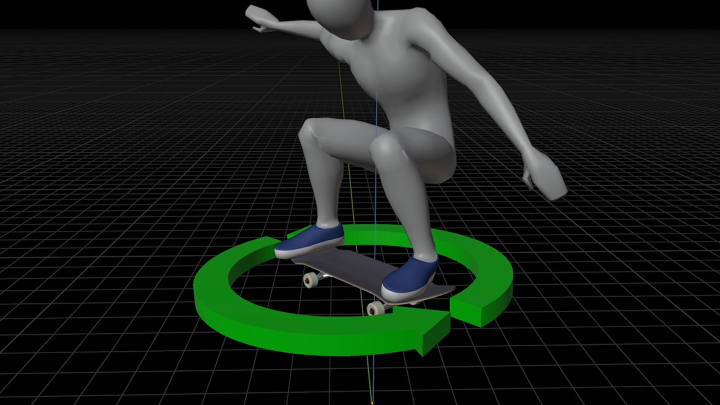
Conclusion of the angle of shoulders
But in fact, the same thing can be said when you crouch down: the angles of your upper and lower bodies' get closer to each other when you crouch down. This means your body spontaneously decides its acceptable angles. All you have to do is keep the angle and jump up.
You don't need to have your shoulders completely parallel to your board, as the angle of your shoulders when you crouch down is an angle your body can accept.

Weight distribution
The most underestimated yet fundamentally important factor
When your weight is on the heel side after popping down the tail, your body pulls your front foot back under it so that it can support its weight before reaching the ground. And this could be why your board turns even when your shoulders are closed.
This symptom tends to appear after reaching your Ollie's peak as it results from your body trying to support its weight.
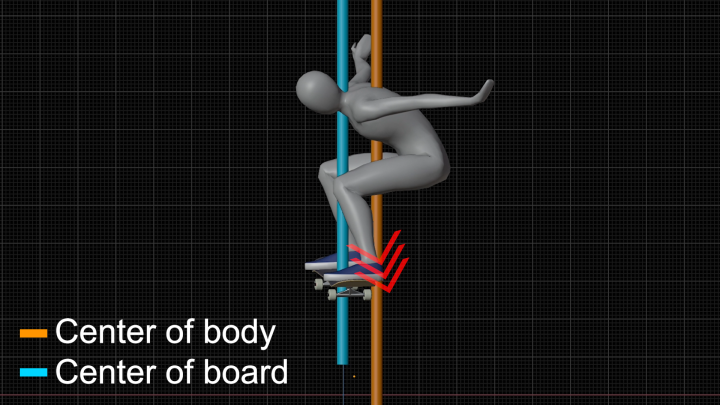
Type #1 Your body's center of gravity is on the heel side from the beginning.
You may do this when you want to avoid landing back on your board, especially when you are not used to the feeling of it.
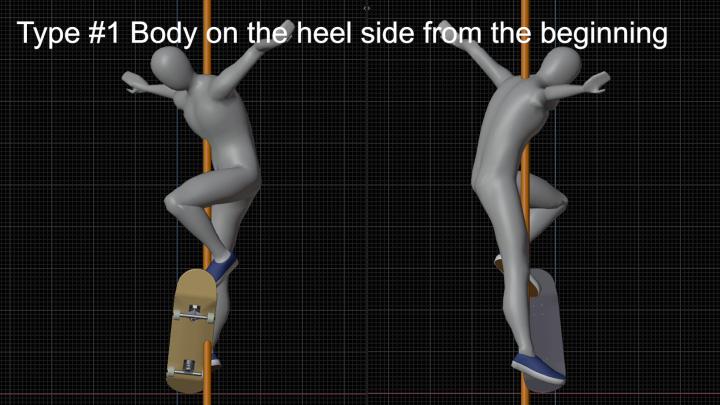
Type #2 Your body's center of gravity swings off to the heel side
If you hunch over when you crouch down, your body's center of gravity leans on the toe side at first. But, as you extend your back when jumping up, your body's center of gravity moves to the heel side correspondingly.
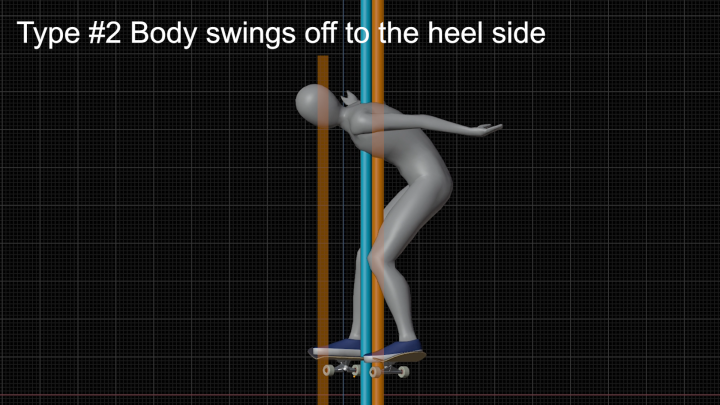
How to avoid these problems
Try to have your body's center of gravity over your board the whole time.
An easy way to tell if your body's center of gravity is at the right place or not is by staying low after crouching down. If you can keep moving straight forward, that means the center of gravity is above your board.
And if not, you may turn. Adjust your weight distribution depending on the type of symptoms you fall under.
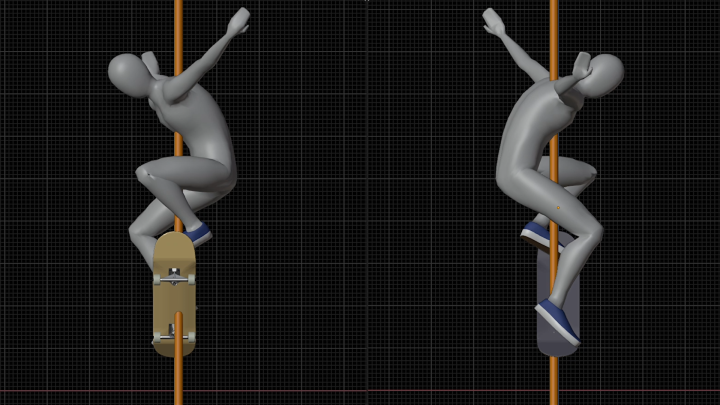
Foot placement
How could foot placement could turn your Ollie?
Let's say you have your shoulders and weight distribution right. But sometimes, your board still turns. Let's also talk about the remaining factors.
Placing your front foot at the right angle to your board may turn your board, especially when your toes are naturally open.
As you twist your front toe to place it at the right angle, your front foot tries to return to its original state, which may spin your board in the air. And this problem appears when you are going up as your front foot starts turning as soon as it gets into the air.

Place your front foot where you feel comfortable
To avoid this, you may place your front foot in a way you feel comfortable instead of trying to put it at the right angle. That way, your front foot will not attempt to twist back to its original state, and you can crouch down more stably.
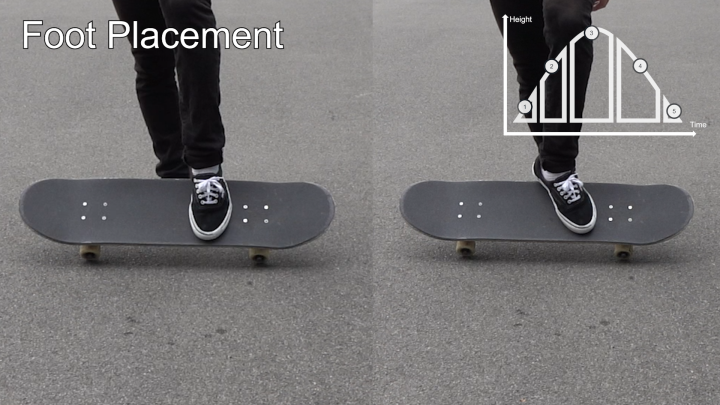
Direction of pop and slide
Popping or sliding in the wrong direction may also turn your board
If you swing out your back foot like you'd do in a front side pop shove it, your board turns. If you slide up your front foot diagonally sideways, your board turns, too.
So make sure to pop straight down and slide up your front foot parallel to the direction you are going.
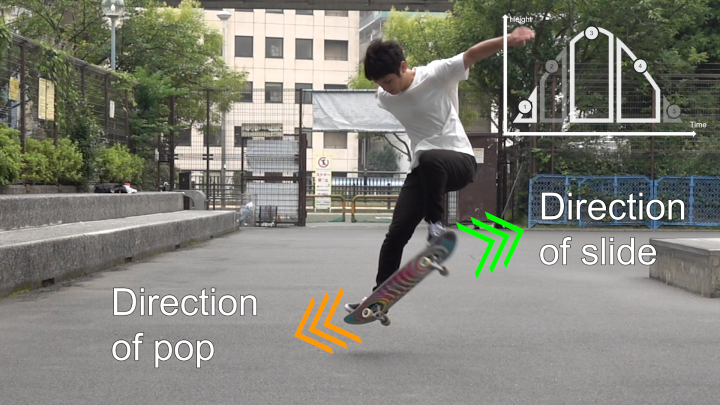
Consider these factors in combination with the angle of the shoulders
Opening your shoulders too much may indeed direct your slide sideways unintentionally.
But you don't need to have your shoulders completely parallel to your board. Your body can accept a certain angle, which you can find by placing your feet where you feel comfortable and crouching down. Try paying attention to other elements if your board keeps turning even after closing your shoulders.

Conclusion
It's not all about shoulders
I personally recommend paying close attention to your weight distribution. Although the angle of the shoulders does stand out, the weight distribution matters as much as the angle of shoulders does.
It may require a lot of practice but leads to many other tricks. So don't be frustrated and try something else sometimes, and you will get your Ollies done soon.
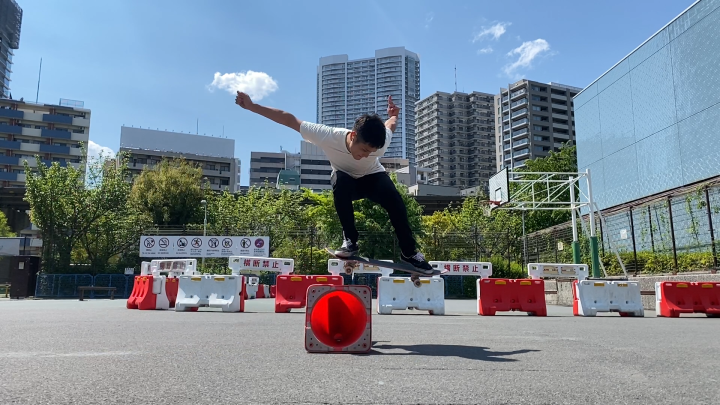

 Convert your video into 3D
Convert your video into 3D Facebook
Facebook Twitter
Twitter



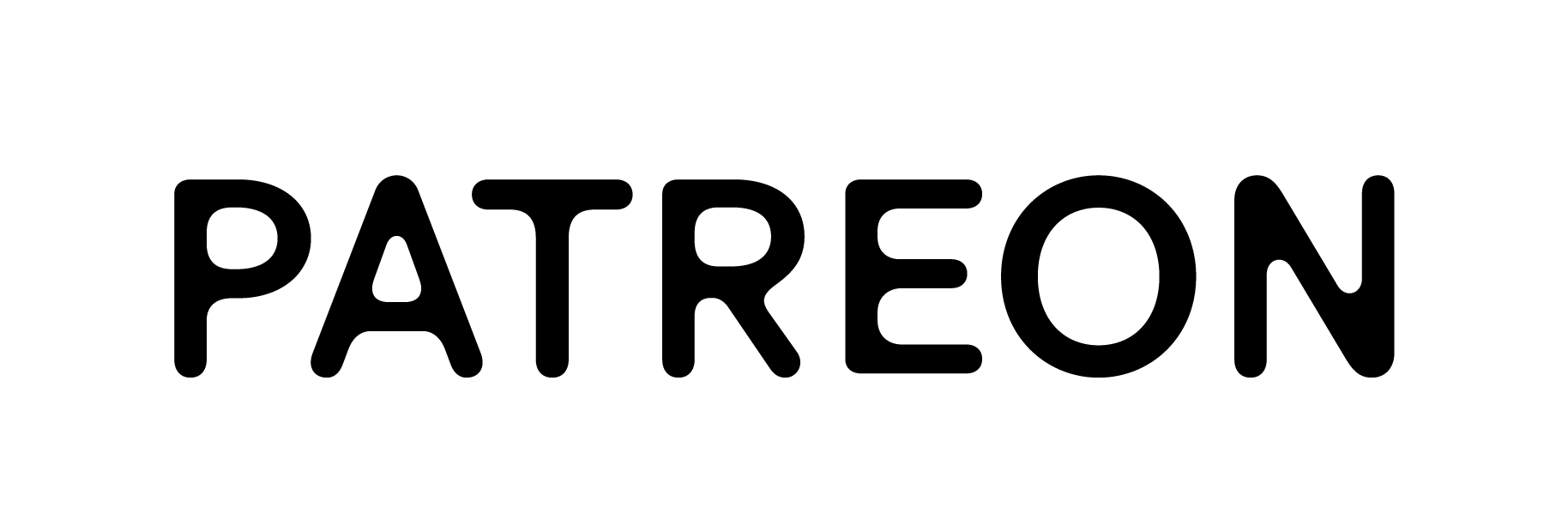
sweet analysis man